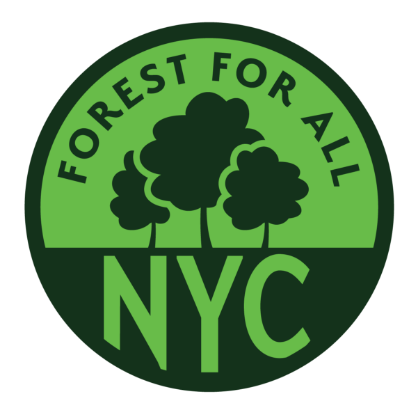By Tequila Minsky | amNewYork
On Monday in City Hall Park, Manhattan Borough President Mark Levine, flanked by Bronx BP Vanessa Gibson and Brooklyn BP Antonio Reynoso announced a vision to plant a “Million More Trees” across the five boroughs over the next decade.
BP Levine started off announcing the initiative, “We are here to stand up for essential infrastructure.” Emphasizing that trees are more than just pretty things— absorbing CO2, affecting storm run-off, cooling neighborhoods in times of extreme heat, he pointed out that, “Trees are an equity issue; they are not evenly distributed throughout the city.”
Levine acknowledged the Forest for All NYC Coalition; fifty non-profits that have called for the expansion of the urban canopy—today it stands at 22%. “With the addition of one million new trees, the canopy will achieve 30%.”
Challenges include financial, bureaucratic, and logistical. “More than a half-dozen agencies must partner to work toward this goal,” he said. He recognizes that tree maintenance must be built into the program.
“We need funding from the City, State, and probably the Federal government. We have learned a lot from the first One Million Tree Initiative (Bloomberg’s 2007 million tree planting goal).”
Bronx BP Gibson spoke from the podium, “I look forward to working toward a healthier City of New York.” She pointed out how making the city greener creates a healthier economy and environment, creating local jobs. “It invests in the city.”
She mentioned there are a little more than 7 million trees in throughout the city—primarily in public parks and playgrounds. “We can look at other entities, public schools, community centers, senior centers. We can work with our partners in the private sectors.”
Gibson cited asthma, heart disease, high blood pressure, among the number of the chronic diseases prevalent in her borough, and that trees can help many health issues. Health, wellness, and the ability to save lives are components of this program.
“We must see that this program is sufficiently funded,” she continued emphasizing the need for more urban rangers, forestry programs and for the summer youth program, to get more young people involved. “It’s an ambitious initiative but not impossible.”
While Queens BP Donovan Richards and Staten Island BP Vito Fossella are on board with this initiative, they couldn’t attend due to scheduling conflicts. However, Brooklyn BP Reynoso quipped, “I don’t remember ever five borough presidents coming together to push an initiative.” One of his main concerns is equitability—presence of trees in underserved neighborhoods.
He also referenced Brownville, East Harlem, and Mott Haven— just a few of the neighborhoods where residents suffer from a myriad of mentioned diseases and are visibly lacking in trees.
Emily Maxwell of the Nature Conservancy, which supports both this initiative and the goal to achieve 30% canopy by 2035, spoke of how from 2010 to 2017 the canopy expanded citywide, but in coastal communities trees were lost, and in low income and communities of color still tend to have less trees. Also, the city lost a number of trees during an early snow/ice storm a few years back. Witnessing the loss of tree-canopy is a call to action.
Planting, protecting and maintaining trees across the city, backyards, businesses, institutions, NYCHA, schools and also streets, parks, and forested natural areas, are truly critical to the success of this initiative.
Shekar Krishnan, Chair of Parks Committee of City Council (Jackson Heights, Elmhurst—least amount of parks space in New York City, he says) said, “Parks and trees are not just about space but are a racial justice, public health, and climate justice issue.”
He mentioned how a neighborhood in East Harlem can be 30 degrees hotter than a neighborhood on Central Park West or the South Bronx can be blazing hot. “Trees are distributed so unequally. The need for trees is felt particularly in communities of color. Mental health (is at issue). The tree-scape makes us feel calmer.” It’s a public health issue.
Also pushing forth this initiative is Tania Gayle from Green City Force whose goal is to train young leaders, hoping to develop in them a passion for sustainability and give them skills for jobs or college, and Lynn Kelly of New York Restoration Project, the city’s largest non-profit nature conservancy stewarding parkland, community gardens, and public open space.
It was very sunny and very cold this February 14 when BP Levine gave the shout-out, “We’re here because we love trees. Your borough presidents are bringing you a giant bouquet of trees. Happy Valentine’s Day!”
Original story here.
